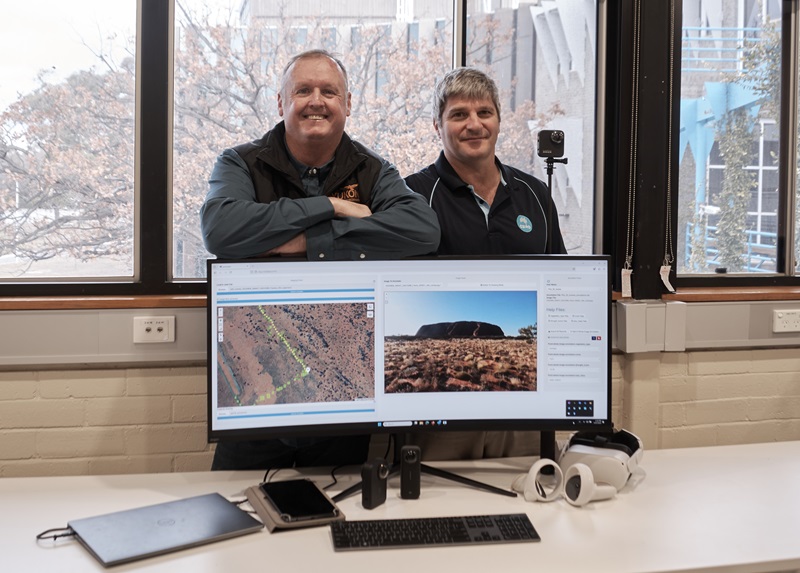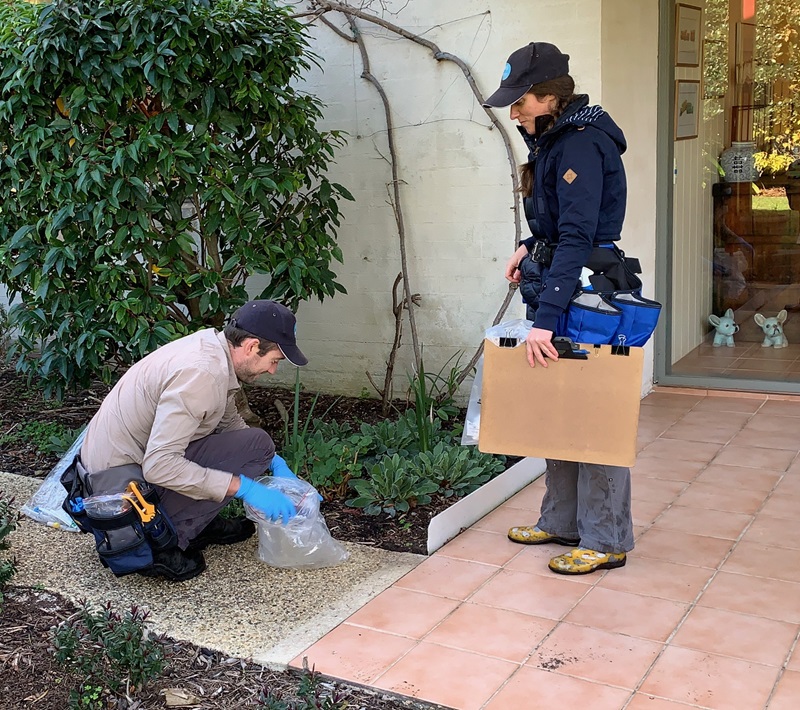A team of CSIRO researchers has been recognised for their work developing an innovative solution for the rapid collection of ecological data from the vast and diverse ecosystem of central Australia.
The software is now being used in other unique ecosystems in Australia where data will help inform conversation responses to climate change, invasive species and bushfire.
They are among three teams of CSIRO researchers recognised in the latest Australian Museum Eureka Prizes , rewarded for innovative use of technology, excellence in interdisciplinary scientific research and infectious disease research.
Transforming ecological monitoring using 360-degree cameras

Nunzio Knerr and Bob Godfree are finalists in the Innovative Use of Technology category, recognising the development of 'Pannotator'—free, open-source software designed to turn panoramic images into ecological data.
Pannotator was developed to address a major challenge—to rapidly map drought-induced dieback of plant species across Uluru-Kata Tjuta National Park in central Australia, home to Anangu. With limited resources this would have been impossible, but by using 360-degree cameras researchers were able to capture thousands of panoramic images across this vast and ecologically diverse area in just a few days.
The Pannotator package was then used to extract data on the distribution and health of vegetation from these images, creating high-resolution, landscape-scale dieback maps of different species. Pannotator can also be used with advanced AI and machine learning tools, unlocking new opportunities to generate repeatable, georeferenced data at scale in virtually any ecosystem.
The CSIRO team is now working with scientists and land managers to use Pannotator in other ecological and conservation projects, including tracking climate change impacts in the Australian Alps, monitoring Miconia invasion in northern Queensland over time, measuring tree reproduction in central Australia, and assessing the recovery of rare species after bushfire.
Solving the West Antarctic Ice Sheet mystery

Nerida Wilson works with CSIRO's National Biodiversity DNA Library and is a finalist in the Excellence in Interdisciplinary Scientific Research category. This is recognising research she undertook as part of an international team while working at the Western Australian Museum and University of Western Australia .
The team used octopuses to solve a mystery about the West Antarctic Ice Sheet, the huge ice sheet that covers West Antarctica. They found this ice sheet vanished during the Last Interglacial period, around 125,000 years ago.
At that time, global temperatures were similar to today. It's a warning to the world that we may be nearing the tipping point of this ice sheet. If it melts, it could raise sea levels around the world by 3 to 5 metres.
How did octopuses tell them? Population genetics! The team looked at the DNA of a species of octopus living on opposite sides of the ice sheet. They found genetic connectivity between them, dating back to the Last Interglacial. This would only be possible if the seas had been connected due to the ice sheet melting completely.
Beating Buruli ulcer

Stacey Lynch and Kim Blasdell, from CSIRO's Australian Centre for Disease Preparedness , are finalists in the Infectious Disease Research category as part of the Beating Buruli initiative led by the Doherty Institute .
The Beating Buruli team has greatly progressed our understanding into the ecology, epidemiology and risk factors of Buruli ulcer. This includes confirming the role of mosquitoes in the transmission of this skin disease .
As part of the world's largest case study on Buruli ulcer, led by us, the team identified both risk factors and behaviours that can protect against this disease.
They also validated possum faecal-based surveillance as an early warning system for human cases of this disease.
Collectively this information means we finally have the tools to develop intervention measures against this disease, bringing us closer to beating Buruli.






